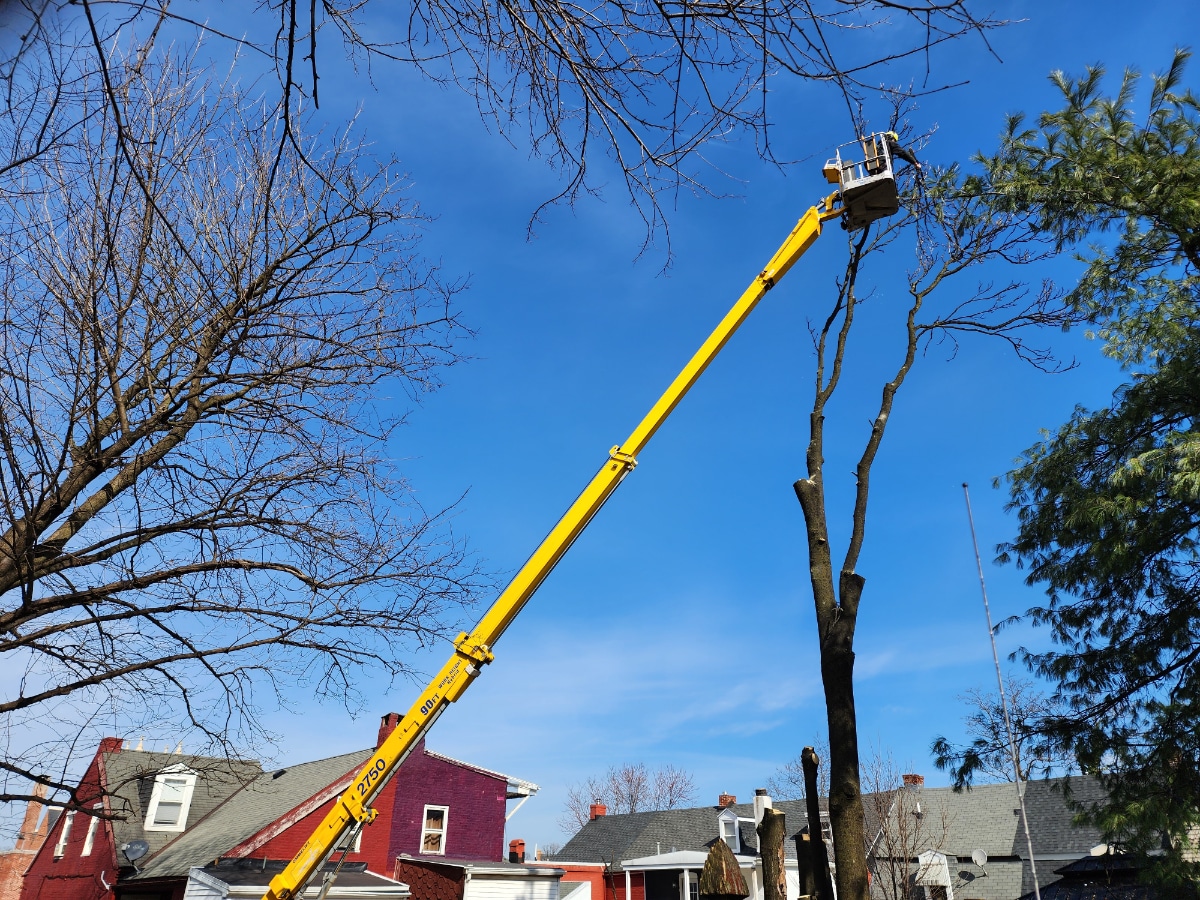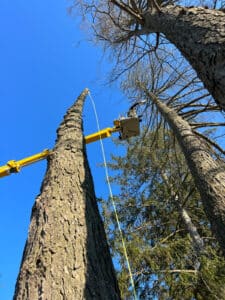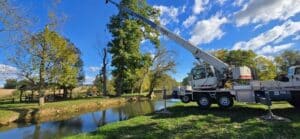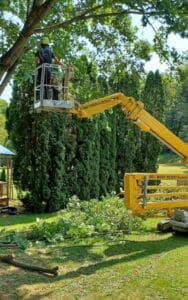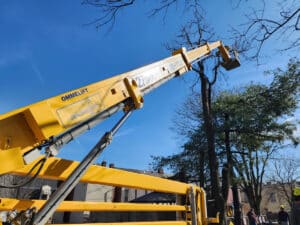Highlights
- Arborist are certified by the International Society of Arboriculture (ISA), recognized globally as the standard in tree education and service work.
- Our tree services have an average cost of a few hundred dollars for pruning, up to a few thousand for large-scale removal of multiple trees.
- Get a free, in-depth tree report by hiring an arborist or talking to the team at Sunny Slope Tree Services!
Arborist Costs: What To Expect
Well-trained and experienced arborists play a vital role in preserving the health, safety, and aesthetic appeal of trees, enriching ecosystems and enhancing the quality of life for communities throughout the U.S.
As one of Lancaster’s top tree removal companies, Sunny Slope Tree Service provides comprehensive tree services: from tree trimming to stump removal and arborist services, we’ve got you covered.
But what should you expect for tree removal costs, or the cost to hire an arborist?
Let’s look at some common tree removal service prices for the kinds of work we see most often in Lancaster.
(Use the Table of Contents to the right to jump straight to the pricing!)
But First, What Does An Arborist Do, Anyway?
Arborists are specialized tree service professionals dedicated to the care and maintenance of trees, sometimes referred to as a tree surgeon or tree doctor!
Their primary work involves tree pruning, tree trimming & tree thinning, and sometimes tree removal, all crucial to ensuring the health and safety of trees and their surrounding environment.
Through careful pruning or trimming, they work to foster a tree’s health and growth, remove diseased or dead branches, and enhance the overall structure and appearance of trees. Assessing and improving the tree’s health is a fundamental aspect of an arborist’s duties, often detailed in arborist reports which outline the tree’s condition, recommendations, and treatments for its care. Additionally, arborists are often trained to skillfully handle tree removal when necessary, employing specialized equipment and techniques to safely eliminate hazardous or unwanted trees without causing harm to nearby structures or vegetation.
Arborists are also adept at diagnosing and treating tree ailments after a tree inspection, helping to diagnose diseases, insect infestations, and nutrient deficiencies. By identifying and addressing these issues, arborists seek to contribute to the long-term vitality and resilience of trees in a wide range of settings, from urban landscapes to forested natural habitats.
What is a Certified Arborist?
A certified arborist is an individual who has achieved a certain level of expertise and competency in the field of “arboriculture” (the study of trees and tree health) through education, experience, and examination.
Certification is awarded by the International Society of Arboriculture (ISA) and is recognized globally as the standard in tree services rigors.
ISA sets rigorous standards for arborists, requiring them to demonstrate proficiency in various aspects of tree care, including tree identification, tree inspections, tree care, pest control, and safety protocols.
Once certified, arborists adhere to a code of ethics and continue their education to stay updated on the latest developments in arboriculture. Certification not only validates an arborist’s expertise but also assures clients that they are hiring a professional who is committed to maintaining high standards of practice in tree care.
What Do Common Tree Services with an Arborist Cost?
Tree removal costs can vary dramatically among tree removal companies, partly because “your neighbor with a chainsaw” has a lot less equipment and overhead (and often no insurance) than a larger or more experienced tree removal company.
Our arborist cost or price for tree services is quoted based on an in-person meeting at your home or property. We come out to your space, see the tree, provide a free tree inspection and consultation, and then give you a final quote for the tree removal cost.
Tree services are priced by the project, and a variety of factors will influence final pricing. It’s important to understand that the cost involves more than just the tree itself; access to the tree or tree removal/pruning area, the size and range of equipment needed, and the tree’s size, height, and species are all critical factors that can increase the price. Our comprehensive approach ensures that the final quote reflects the full scope of the work required, not just the tree. Factors involve:
- Access to the tree or tree removal/pruning area
- Size and range of equipment needed for your tree work: two people with a chainsaw and climbing equipment will cost less than a huge tree that requires cranes and extensive tree cabling
- Size of the tree to address, tree height, whether there are multiple trees to take down, as well as tree species
This all can sometimes be most easily illustrated with some hypothetical scenarios.
Scenario 1: Arborist Cost for Large Tree Trimming
In this hypothetical, we’ve been called in to prune a 40-foot oak tree (hardwood trees) in a front yard.
This would likely involve removing many of the lower limbs, plus thinning some of the limbs throughout the canopy,
In the Lancaster, PA area, we would expect an average cost of around $750 to $1000, including all cleanup.
What could elevate that price? Tree size is key, as small trees in the middle of a yard are fairly simple, while large trees that are overhanging buildings will take more care, time, and equipment.
Scenario 2: Arborist Cost to Prune a Decorative Red Maple
While this can vary, caring for a small 15-foot red maple with some pruning and thinning might run as low as $250 for an ornamental tree like this. To prune a few decorative trees on one property, our pricing would begin at around $75 to $100 per tree.
Again, the cost of tree trimming services can vary dramatically in price based on what’s involved, and an average cost can be hard to nail down. A typical price range for our project is from $300 to $2,000 for a larger tree removal cost.
Location, different tree species, placement near existing trees, and more are all intimately involved.
Stump Removal and Tree Removal Costs
Our stump removals and stump grinding work is usually $150 to $600 per stump.
We covered the cost to remove a stump more deeply in a previous blog post, here.
Tree removal average costs, which can sometimes require a crane and extensive equipment on site, generally begin at $1000. We covered the price of a tree removal in another blog post, here.

Our Tree Services Explained
Pruning Versus Thinning Versus Hazardous Reductions
Pruning generally entails removing dead or dying limbs and branches to keep trees healthy.
Thinning a tree generally refers to removing live or growing limbs in order to imporve the general health of the tree. This may also involve elevating the lower limbs (removing
A hazardous reduction might include cutting back the tree canopy. We generally don’t like doing this unless it’s absolutely necessary. Why’s that? Well, removing a substantial portion of the tree canopy – like cutting a tree in half to avoid power lines or an overhang – is hard on the tree. It often simply cannot grow back in a healthy manner.
Tree Removal
Tree removals generally involve cutting down a tree entirely. This is easy for tall straight pine trees in the middle of a field that can fall one way or the other, but more difficult for dying trees that are overhanging a home or roof.
Tree Stump Removal
Tree stump removal involves the complete extraction of a tree stump and its root system from the ground after a tree has been cut down. This can be accomplished using various techniques, including stump grinding or excavation. Stump removal is helpful (but not necessary) to eliminate tripping hazards, prevent regrowth, and prepare the area for landscaping or construction.
Tree Injections
A tree injection, also known as tree trunk injections, are a method of delivering pesticides, fertilizers, or other chemicals directly into a tree’s vascular system. This technique bypasses the need to apply these substances to the soil or foliage, offering targeted treatment for specific tree health issues while minimizing environmental impact and exposure to non-target organisms. The process involves drilling small holes in the tree’s trunk, typically near the base depending on tree size, and injecting the desired substance into the tree’s xylem or phloem vessels. These vessels transport water, nutrients, and other vital substances throughout the tree, allowing the injected material to be distributed efficiently to various parts of the tree, including the roots, branches, and leaves.
Bush or Brush Trimming
While we generally only work on larger shrubs or small trees, bush trimming involves the careful pruning and shaping of shrubs and small trees to maintain their health, appearance, and size. Trimming helps control growth, remove dead or diseased branches, and enhances the aesthetic of landscapes, gardens, and outdoor spaces.
Wood Chipping
Wood chipping involves converting woody material, such as branches, tree limbs, and brush, into smaller pieces or wood chips using a wood chipper. These wood chips can be used for mulching, landscaping, or as biomass fuel. Wood chipping helps to reduce waste, recycle organic material, and create a valuable resource for soil improvement and erosion control.
We do this by default on almost all jobs because it makes debris removal so much easier.
Tree Planting
We often re-plant trees for clients after a dead tree has been removed. It’s great for reforestation, habitat restoration, and landscaping, and environmental conservation efforts. Proper tree planting involves selecting suitable species, preparing the planting site, and ensuring proper care and maintenance to promote a healthy tree and long-term survival.
Common Tree Trimming FAQs
Should trees close to a house be removed?
This depends on factors like tree health, species, and proximity to the house. If there’s a risk of damage or safety concerns, removal might be necessary.
Give us a call for a free arborist consultation and estimate for your tree removals.
What is the best time of year to cut down a tree?
Late winter or early spring is often preferred when trees are dormant, reducing risks and minimizing the spread of diseases and pests. However, tree removal can be done year-round as needed.
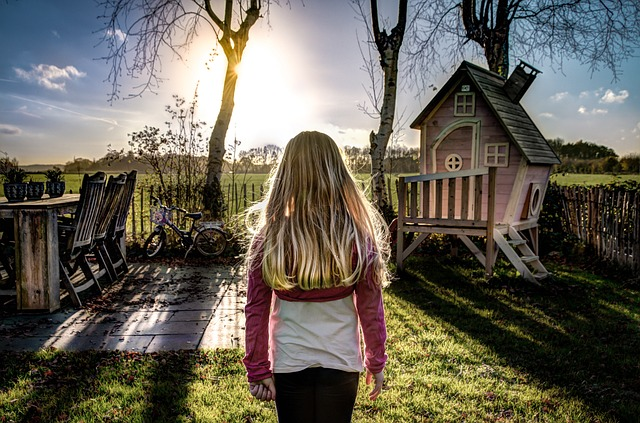
Transform Your Outdoor Space with Professional Tree Care Services and a Local Arborist
Revitalize your landscape and ensure the health and safety of your trees with expert tree care services in Lancaster and Central PA by Sunny Slope! We do emergency tree work too!
From pruning and trimming to removal of unhealthy trees and stump grinding, we offer comprehensive solutions tailored to your needs. Contact us today to schedule a consultation with one of our tree doctors and restore the beauty and safety of your home in no time!

